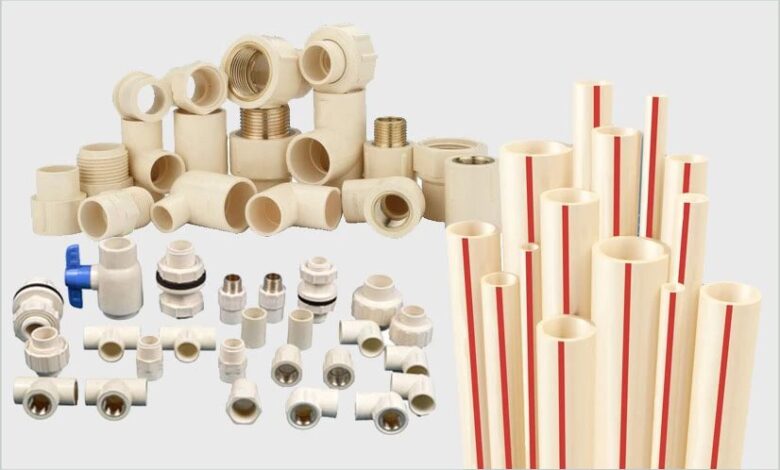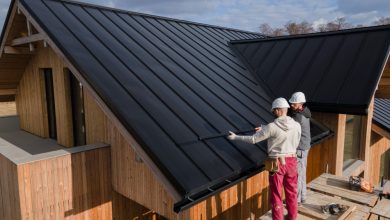Are PVC Pipes worth Buying?

In the 1950s, PVC pipe was introduced to the American sewer, water, and drainage market. Gradually it became popular to be used in all parts of the world. It is currently regarded as a highly durable alternative to older, corrosion-prone pipe materials by state, national, and international agencies and standards bodies around the world.
Table of Contents
Where does the problem lie?
Many towns and cities have ageing and leaking pipelines that distribute fresh drinking water and transport wastewater, wasting water and money. Corrosion accounts for over half of all water network operating and maintenance expenditures, as well as 90% of all lost water costs. Lead, cast iron, steel, and cement pipes, which have been in use for decades, are still widely used. Corrosion, leaks, and breakage are degrading drinking water and wastewater system pipe materials.
Replacing ageing pipes is a significant financial investment, but it is not the only issue. The environment and public health both depend on water distribution and sewage treatment. For example, tuberculation, a type of internal corrosion and biofilm contamination that can limit water flow and produce a breeding ground for bacteria, can develop in iron pipes. It also has the potential to increase the amount of pumping energy required to transport water through the system.
Communities dealing with these issues have the option of repairing, replacing, or a combination of both old and new pipes. Communities are increasingly understanding that contemporary plastic pipes can play a significant role in addressing these issues. This article will discuss the usage and benefits of the PVC pipe, which is commonly used in water and sewer pipes.
Plastic pipes have, of course, become popular in many uses, particularly in the home. Few technologies allow plastic pipes to replace old ageing pipes without having to remove them, lowering the cost and inconvenience of water infrastructure repairs and upgrades.
PVC Pipes
PVC is an artificial polymer that is widely used in plumbing tools. It is a one-stop-shop for all of your plumbing needs. PVC pipes provide numerous advantages to users. They are also the most secure method of transporting drinking water. Furthermore, they are non-toxic and lightweight products that aid in simple and safe operation.
With increased water pressure, the most common problem in plumbing pipes and fittings is breaking or even bursting. Furthermore, poor-fitting quality frequently leads to leakage, a major source of water contamination. PVC has an excellent tensile property, which is critical for the longevity of plumbing materials. PVC is a tough material that can withstand a lot of pressure. This allows the pipes and fittings to transfer fluid without being damaged by breakage, bursting, or leaking.
The inside of the PVC plumbing pipe has a smooth finish. This promotes uniform and smooth fluid transfer. The smooth transfer also reduces the possibility of fitting damage caused by sudden force applied to a specific area. This article describes in detail all of the features and applications of PVC pipes.
Benefits of PVC:
- It is resistant to corrosion and fewer repairs.
- Because of its flat surface, less energy is required to pump water through it.
- PVC requires less energy to manufacture than older pipe materials;
- PVC is easier and less expensive to handle, transport, and install because of its lightweight.
- It can help save money over the life of a pipe network since corrosion-prone piping systems demand increasing amounts of energy to run as they deteriorate, and PVC is recyclable – though because it is so durable, most of it has yet to join the recycling stream.
- It’s robust and flexible enough to bend around and pull through 2,500 feet (760 metres) of the old pipe.
- PVC plumbing systems are built to withstand corrosion and give years of dependable operation.
- These systems are frequently more cost-effective to install than traditional systems.
- Because of their inherent flexibility and impact resilience, the pipes are particularly suited to places prone to earthquakes or floods.
- Furthermore, modern technology allows the pipe to be dragged into an ageing pipe with minimal surface disruption.
There are, of course, many additional forms of plastic pipes that are beneficial to water infrastructure. Plastic pipes of all kinds play an ever-increasing role in properly delivering water as municipalities battle to manage and upgrade ageing infrastructure. Given these developments, it’s no surprise that PVC water and sewer pipe were named one of the top 20 engineering advancements.
Hassle-Free Installation
Another significant advantage of PVC pipe is that it can be put without the need for large trenches, which can cause significant disruption to roadways, pedestrians, and neighbourhoods. Traditional water pipes are typically built in sections in enormous ditches, then linked above ground to make lengthy pipes.
Plastic pipe, on the other hand, can occasionally be installed without digging a trench. The pipe is inserted by pulling or pushing it through pre-drilled boreholes in small, localised excavations. By putting the PVC pipe through decaying old lines, it is also feasible to rehabilitate pipes without having to dig up the entire line. This method can typically restore the pipe’s structural integrity more quickly, at a lower cost, and without digging it up.
Future Growth of PVC Pipes
PVC is growing as a material used for new drinking water distribution systems. Procurement practises that favour older, traditional materials, as well as non-competitive bidding, remain impediments to further inroads into the water markets. The plastic pipe business, as well as a number of government officials, have been working to address this problem, asking communities to employ transparent procurement methods that result in cost-effective public benefits, such as better, longer-lasting water infrastructure.
Many plumbing pipes are directly exposed to sunlight which can cause damage by penetrating the material. PVC pipes have a protective layer that reflects the sun’s rays. With little to no UV ray penetration, the pipes are protected from breakage caused by material weakening.
PVC pipes’ adaptability makes it suitable for a wide range of domestic and commercial applications. When making a purchase, it is critical to look for the properties mentioned above and quality assurance marks before buying a set from the PVC Pipe manufacturer.




